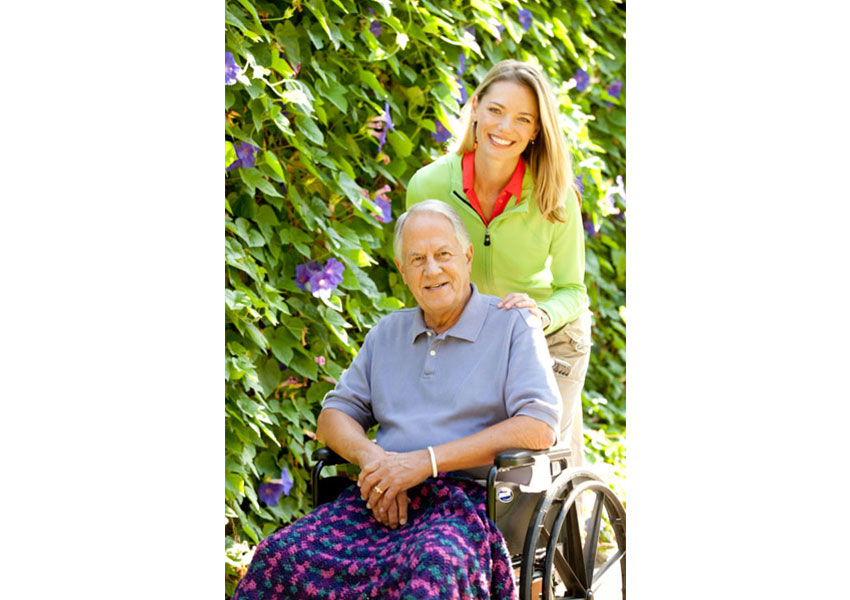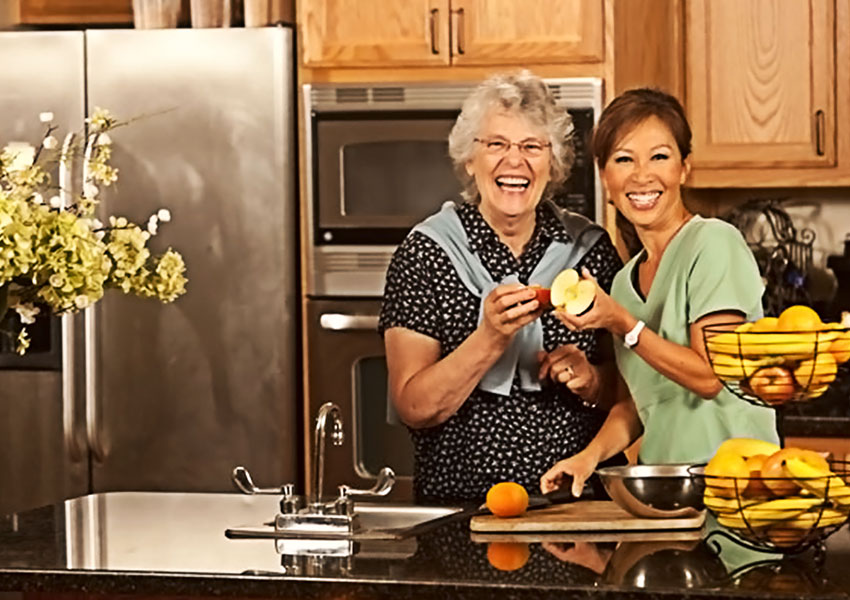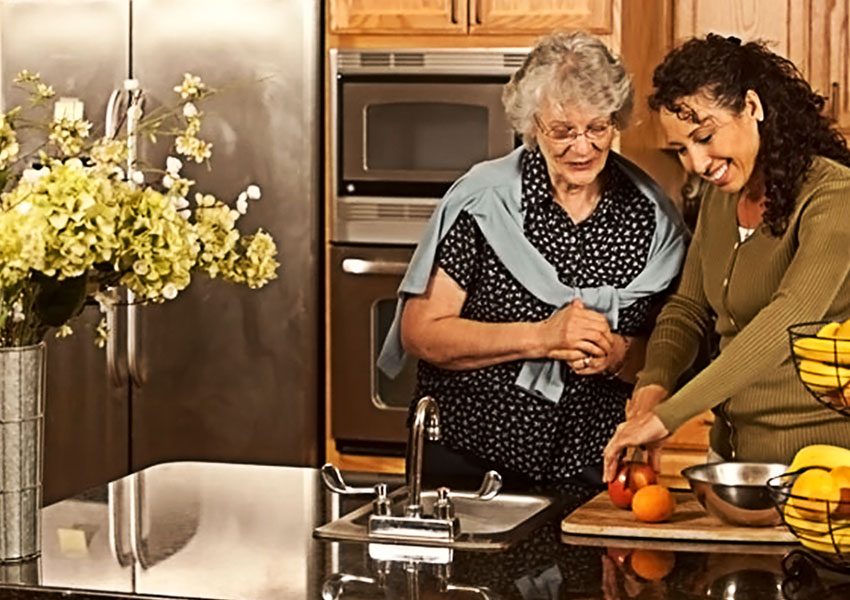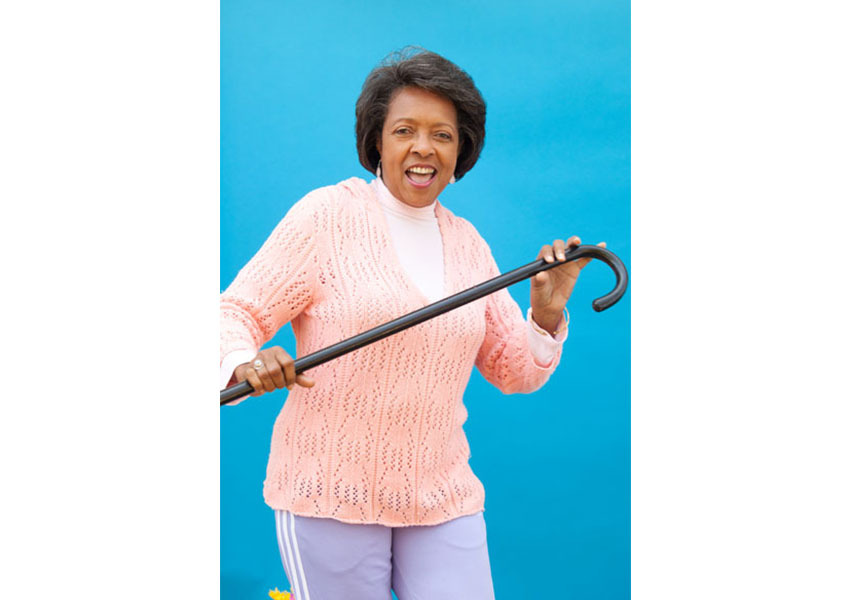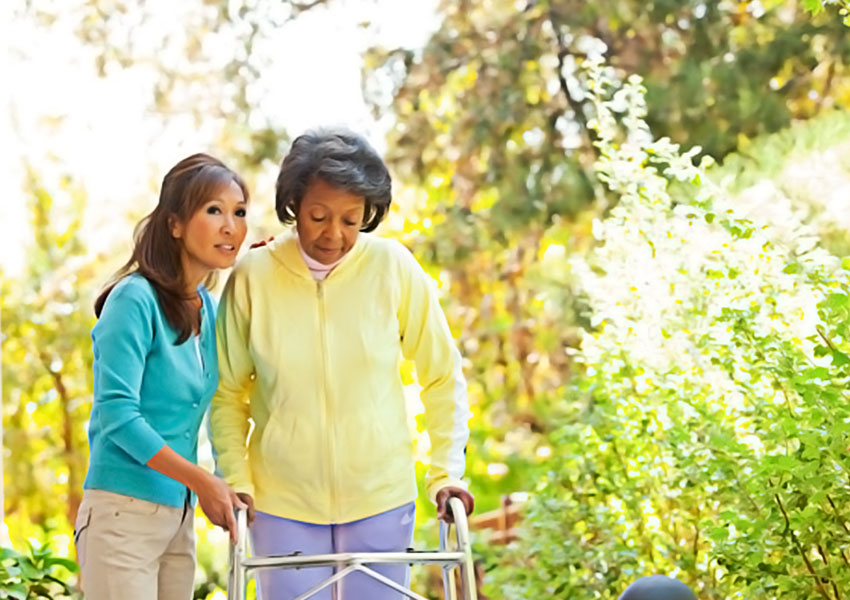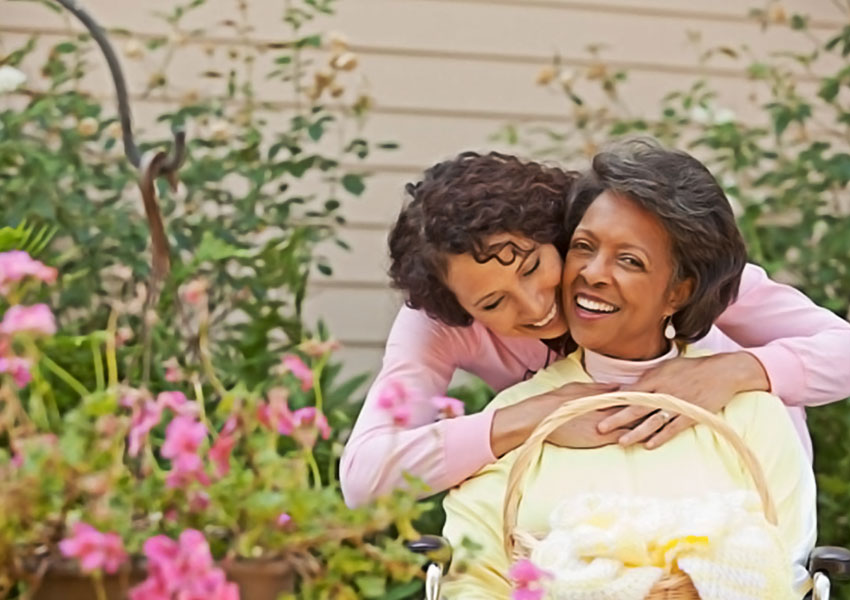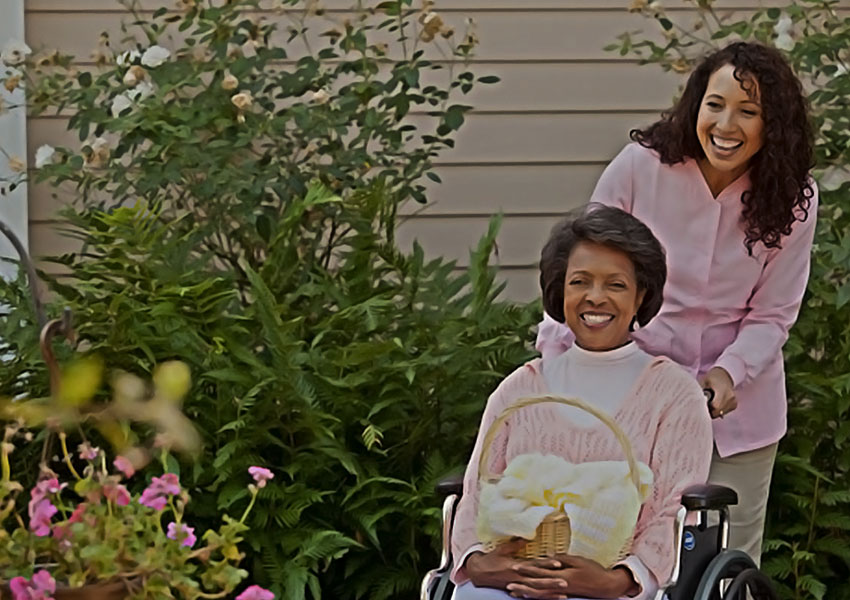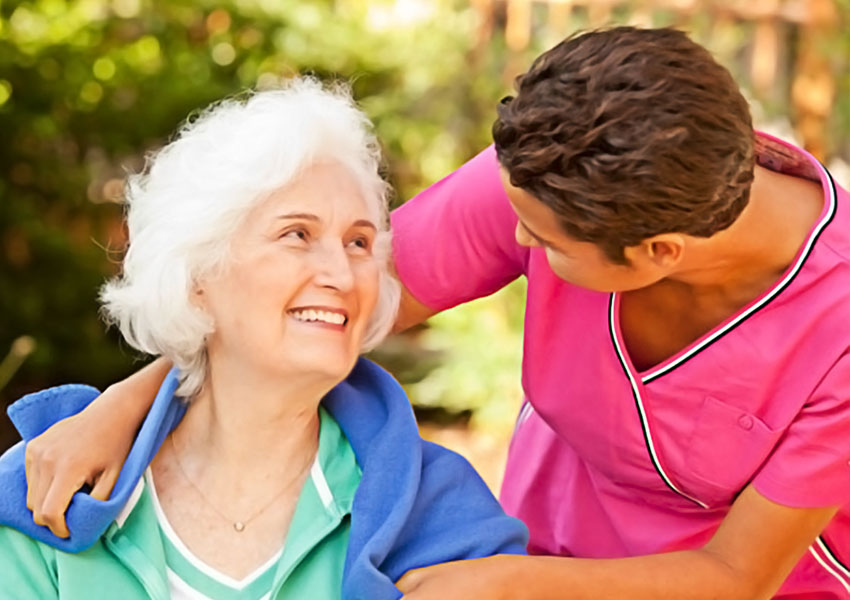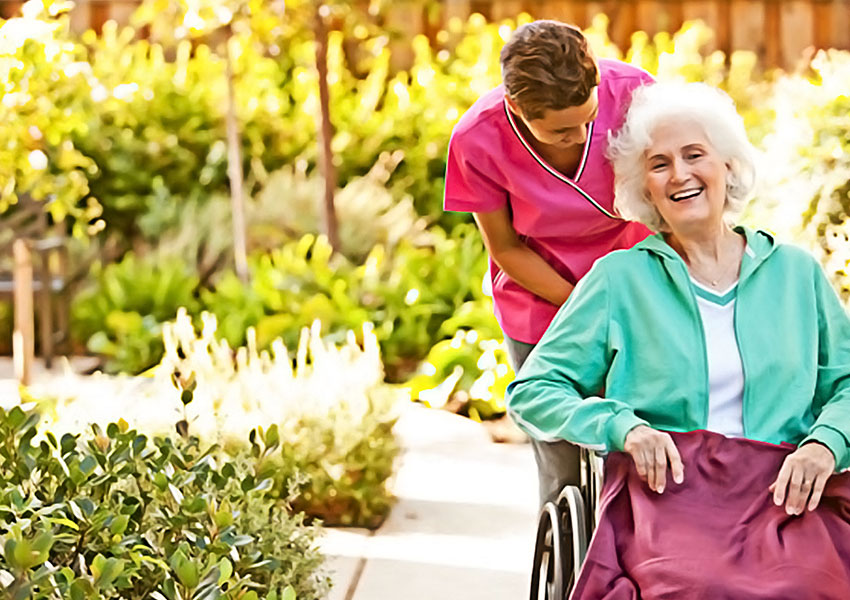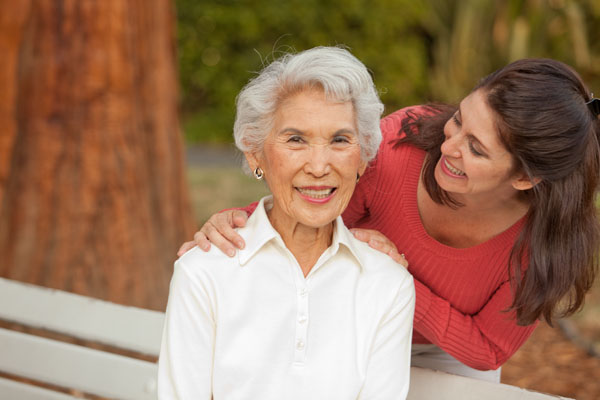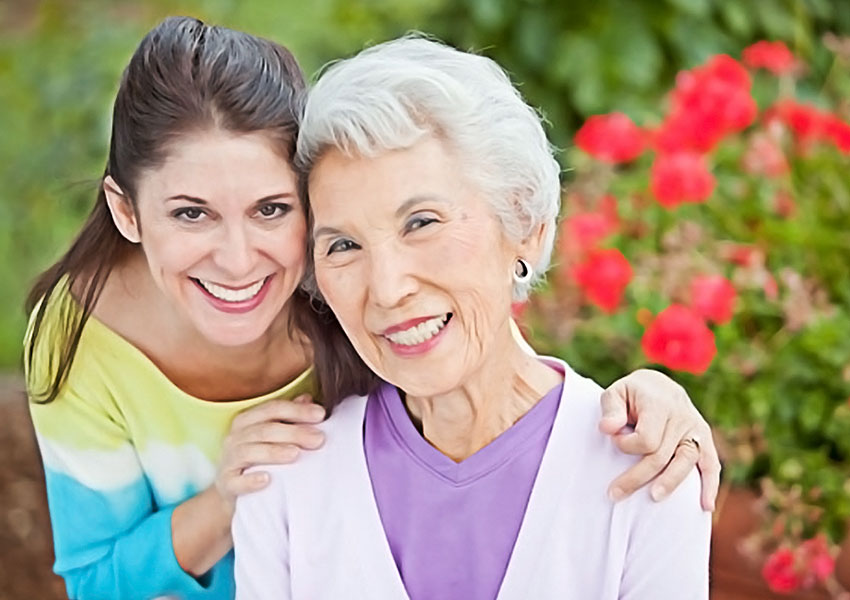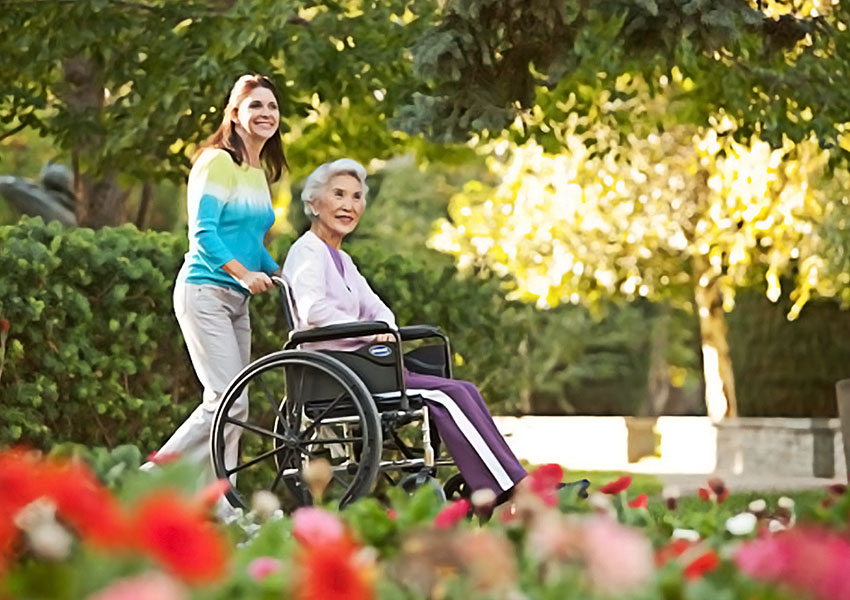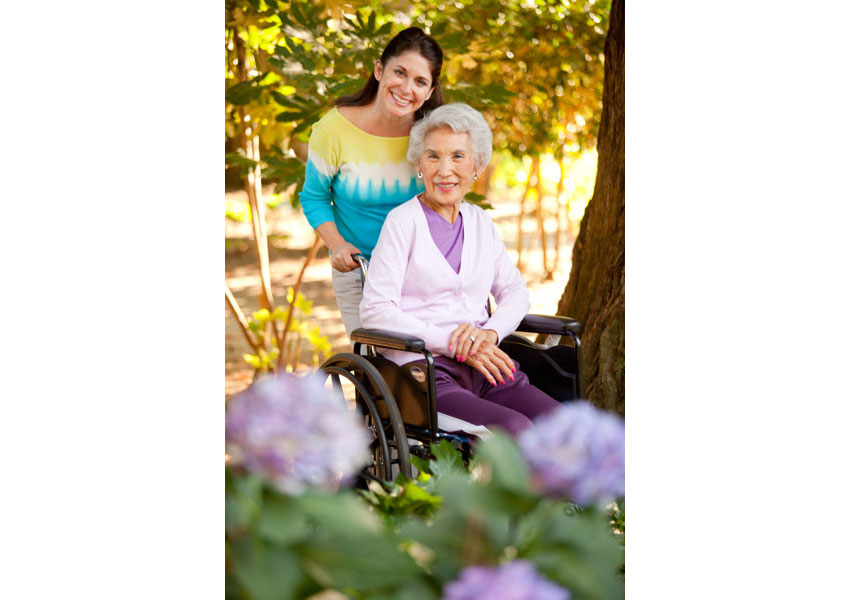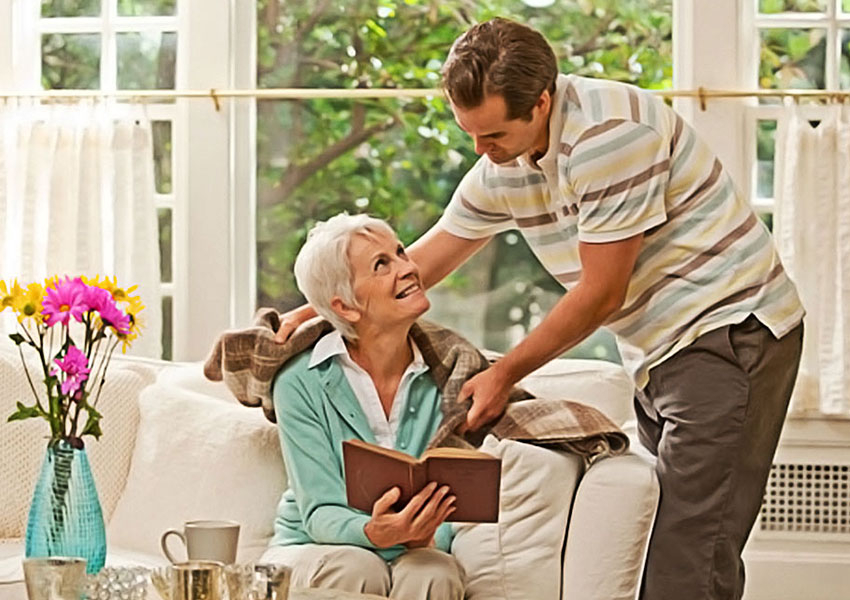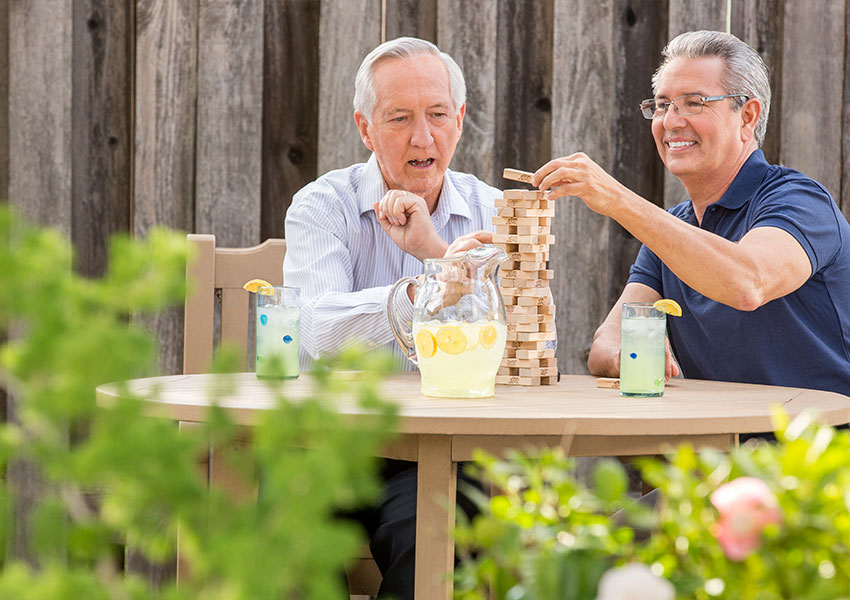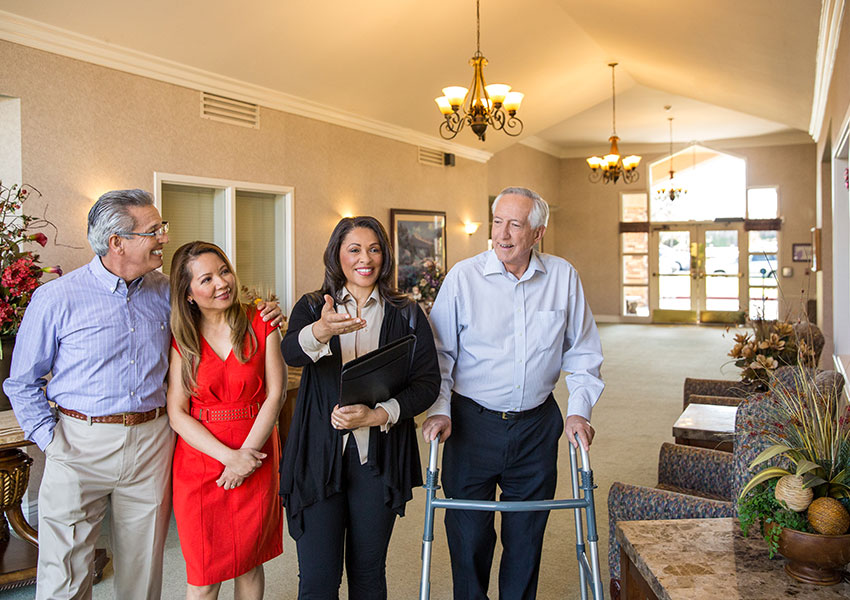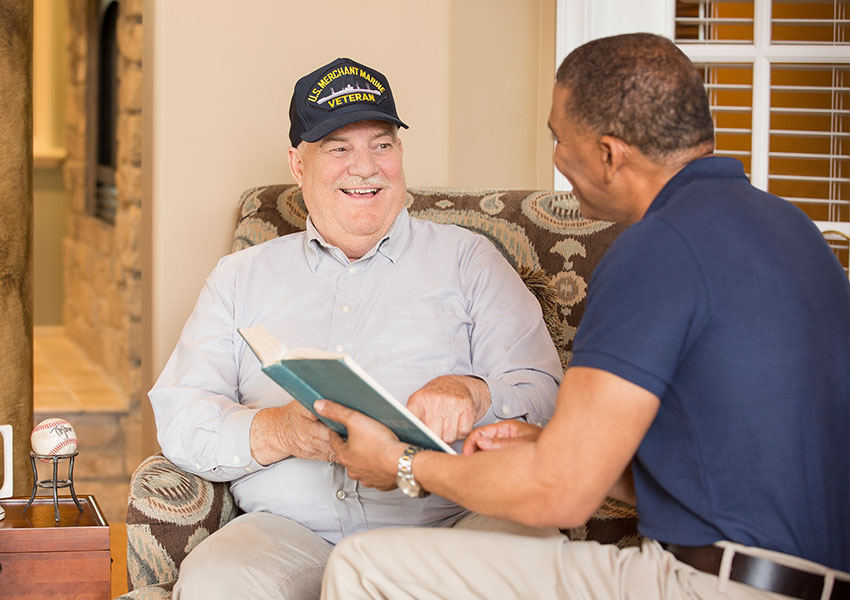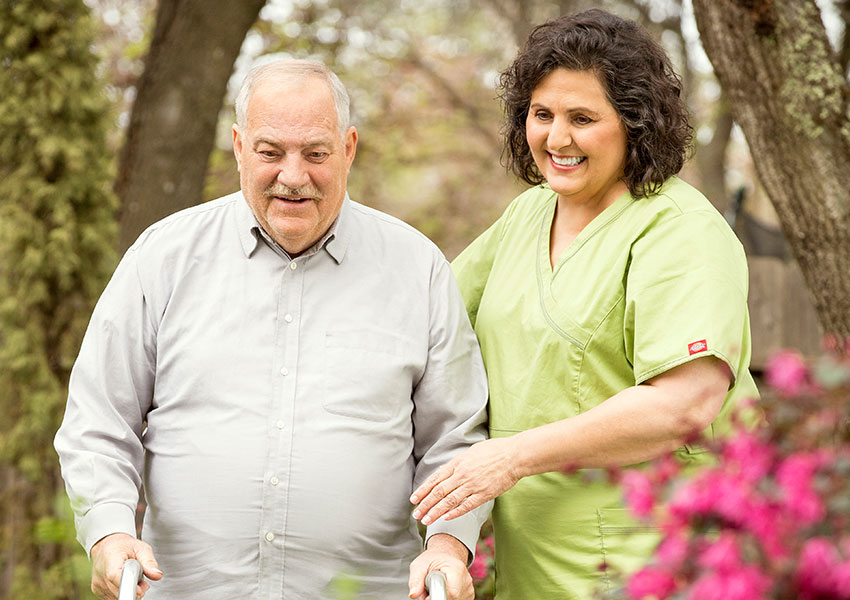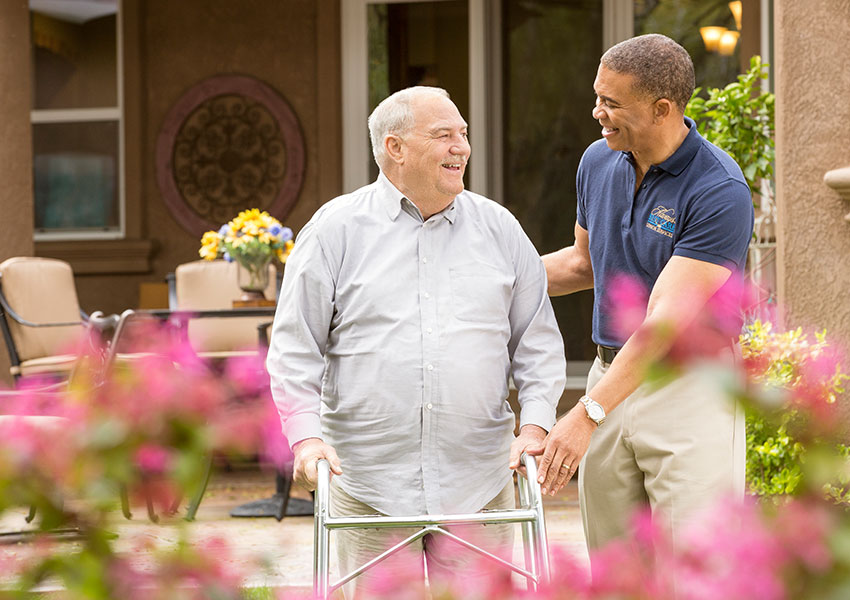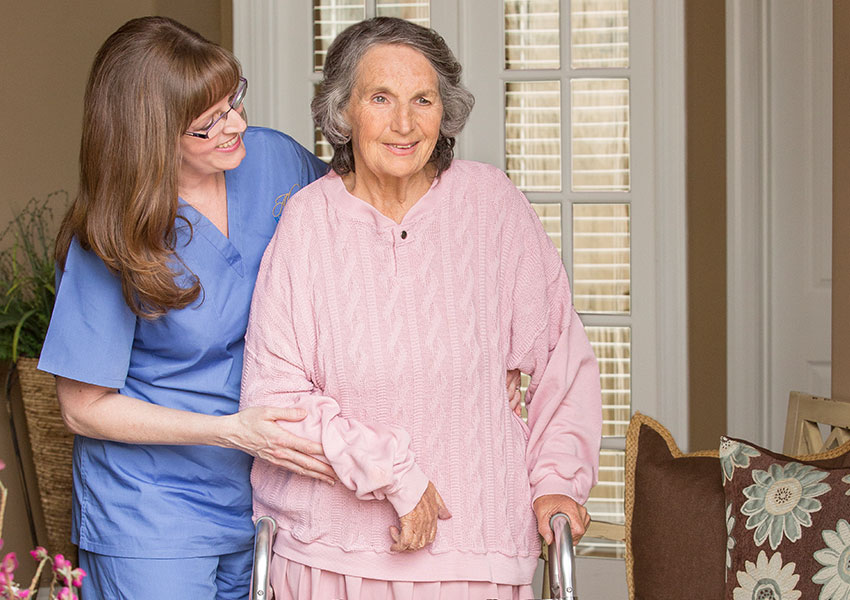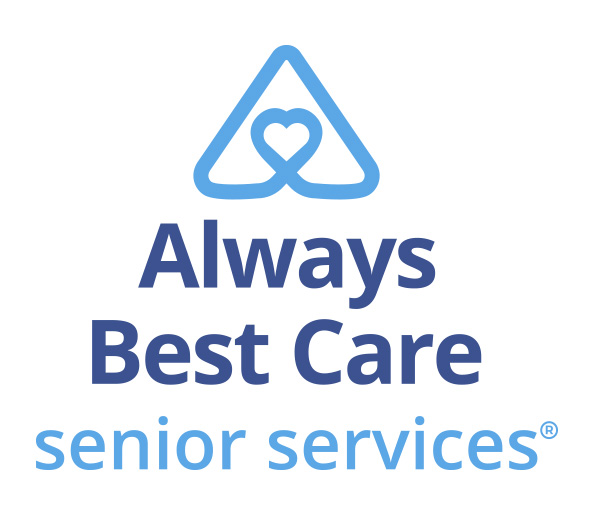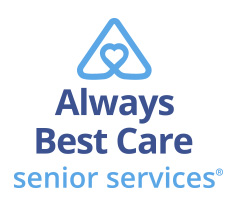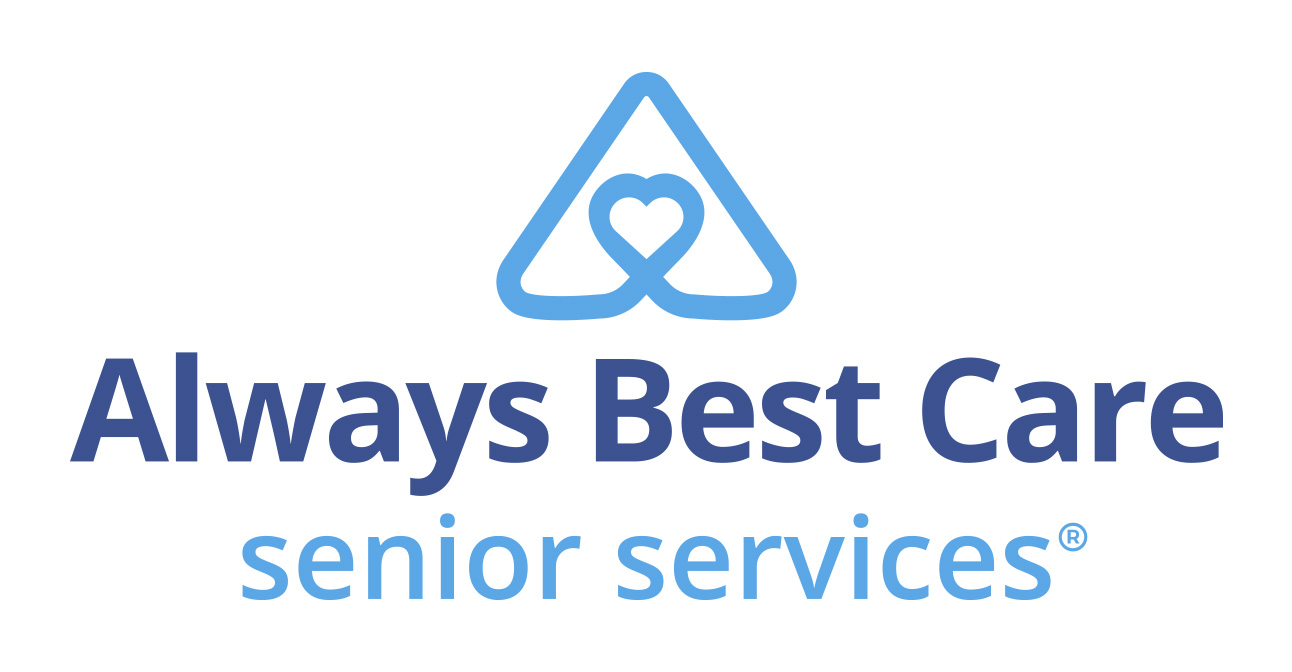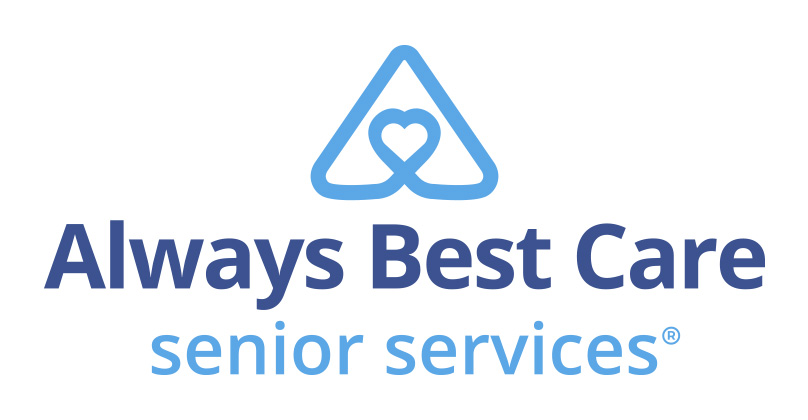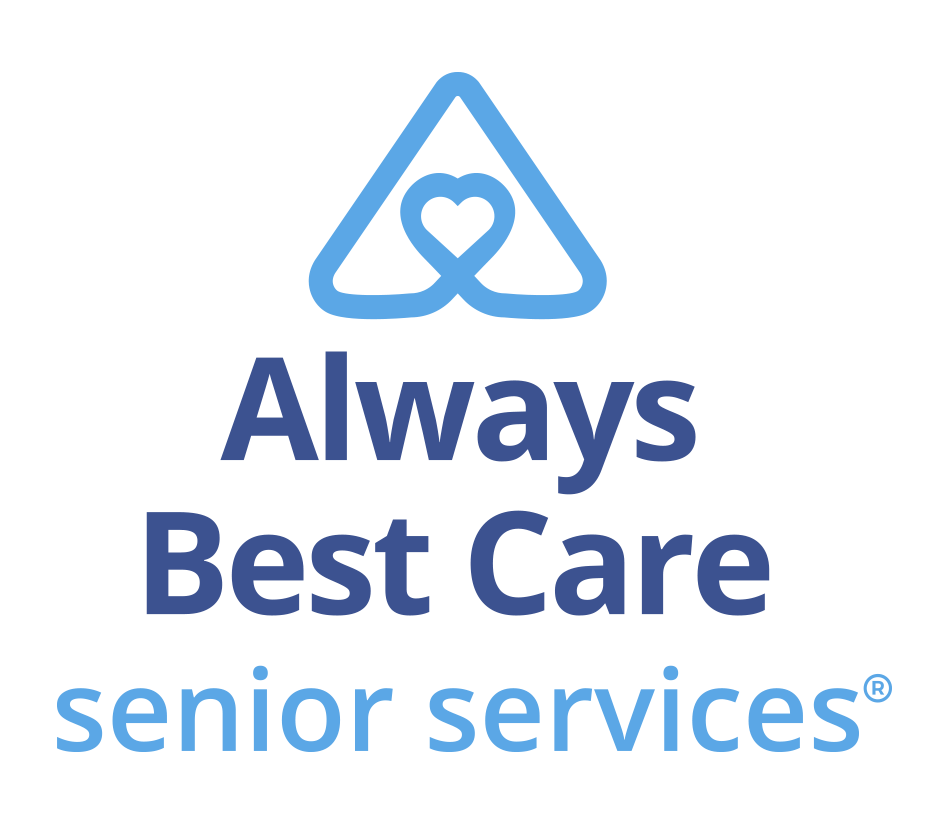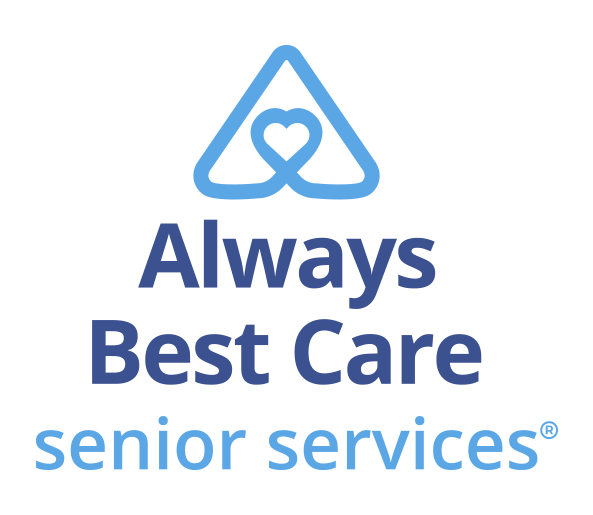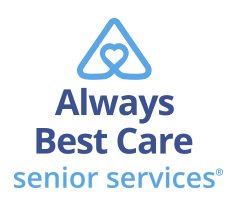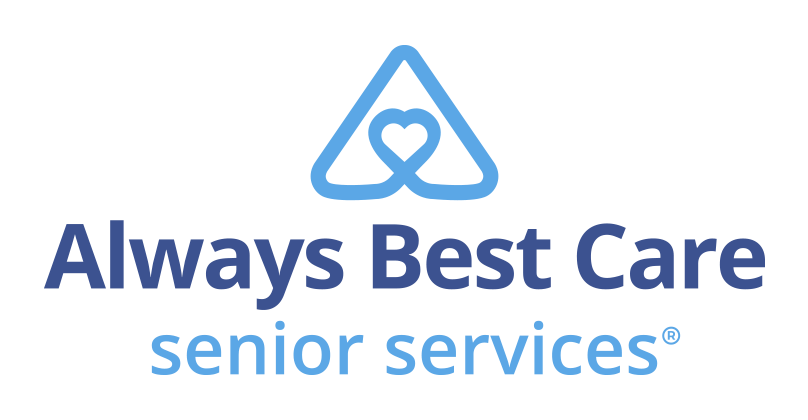As almost every older adult knows, it’s hard to keep the weight off. As we age, we lose lean body mass, which lowers our metabolism; so we need to eat less while being careful to maintain enough nutrients to stay healthy. For older folks, thicker waistlines result from eating as little as 50 more calories a day. That’s equivalent to one slice of cracked-wheat bread.
Being grossly overweight is not just a problem with our clothes being too tight or a wardrobe transition to “fuller” fashions. Obesity is now an indicator of earlier death as well as a cause of many preventable diseases.
An alarming statistic shows that obesity is increasing among older people. In 2009–2010, 38 percent of people age 65 and older were obese, compared with 22 percent in 1988–1994. In 2009–2010, 44 percent of people aged 65 to 74 were obese, as were 29 percent of those aged 75 and older. Those figures affect more than the individual who struggles with weight. By 2050, the number of U.S. older adults, defined as persons aged 65 and older, is expected to more than double, rising from 40.2 million to 88.5 million, reports the Centers for Disease Control and Prevention. Because both aging and obesity contribute to increases in utilization of health services, a higher number of older, obese adults may compound health-care spending.
Avoid buffets, but if you go, scope out the offerings first, if possible, and focus on the most nutritious choices.
Definition of Obesity
Obesity is classified as a health disorder that prevents a person from functioning normally because of excessive body fat. A body mass index (BMI) provides a reliable indicator of fatness for most people and is used to screen for weight categories that may lead to health problems. BMI is an estimate of your body fat based on your height and weight. Generally, those with a BMI above 25 are considered overweight, while above 30 is classified as obese. Obese people, those with a BMI higher than 25, experience rapid weight increase, and layers of fatty tissue gradually form around their waist, arms, abdomen, thighs and legs, restricting their movements. AARP offers a free calculator or you can consult with your medical advisor. BMI, however, is not the only gauge for obesity.
Conflicting Views of Obesity
In January 2013, the U.S. Centers for Disease Control and Prevention concluded that overweight adults older than 65 live longer than their thinner peers. The findings also found that obesity becomes less dangerous with age, and obese adults with a BMI of 30 to 34.9 did not have a greater mortality risk than those with the recommended healthy weight.
Contradicting this controversial study, researchers used data from the U.S. National Health Interview Survey and found that people aged 75 to 84 with BMI levels of 30 to 34.9 have a 59 percent higher chance of mortality than their less obese peers. The research also indicated that mortality risks in obese people increase with age. A follow-up study discovered that personal
habits and choices—for example, sedentary lifestyle, processed foods—result in each generation being obese for a longer period than the former, a factor not considered in previous estimates (from “How to Combat Obesity in the Elderly,” Sept. 3, 2013, Health Central).
Dangers of Obesity
Whether or not obesity translates to a shorter lifespan for older adults may still be a matter of dispute, but scientists have found that obesity leads to other chronic health problems.
Health issues caused by obesity include (from: “Obesity in Older Adults, Online Journal of Issues in Nursing,):
Cardiovascular disease. Obesity is a major underlying factor contributing to hardening of the arteries, which causes heart attacks, strokes and peripheral vascular disease (the latter affecting the circulatory system outside of the brain and heart). All together these afflictions come under the heading of “cardiovascular disease,” the No. 1 cause of death in America. A hardening of the arteries—atherosclerotic cardiovascular disease—is also associated with other risk factors, including elevated blood pressure, high triglyceride levels, low HDL (high-density lipoproteins) levels and high cholesterol.
Diabetes. Obesity increases the risk of diabetes. Even a 15-pound weight gain can increase a person’s risk of diabetes by 50 percent.
Cancer. Twenty-five to 30 percent of several major cancers, including breast (postmenopausal), colon, kidney and esophageal, have been linked to obesity and physical inactivity. Obese men are more likely to develop cancer of the colon, rectum or prostate than men who are not obese. Cancers of the gallbladder, uterus, cervix or ovaries are more common in obese women compared with non-obese women.
Gallbladder disease. A major risk factor for gallstones, obesity is believed to reduce the amount of bile salts, resulting in more cholesterol.
Respiratory problems. In obese patients, lungs decrease in size. Both the increased weight on the chest wall of obese patients and the difficulty experienced in lifting the heavy chest wall when breathing may contribute to poor respiration. The natural decrease in respiratory function in older patients may lead to an increase in sleep apnea syndrome, which, in obese patients, is related to a greater risk of developing hallucinatory and cognitive disorders.
Arthritis and osteoarthritis. For the older person with osteoarthritis, the leading cause of disability in older adults, the most important risk factor that can be modified is obesity. A high BMI is an associated risk factor for knee osteoarthritis in older persons. Obesity, or even being overweight, increases the load placed on joints, especially the knee and hip joints. Breakdown in cartilage, resulting from the increased weight on joints, may result in pain and further functional disability.
Cognitive functioning. Although our memory and our ability to process information are known to deteriorate with age, studies show that they worsen more rapidly in the population affected by obesity.
Obesity is even one of the main determinants of nursing home admissions, because someone who is overweight often becomes sedentary, making it more difficult to care for themselves.
What You Can Do
Experts say that making even small lifestyle changes can have an impact. American Dietetic Association research has shown that a 5 to 10 percent decrease in body weight can reduce blood pressure and cholesterol levels significantly. And the Diabetes Prevention Program found that losing just 5 to 7 percent of your body weight and doing moderately intense exercise (like brisk walking) for 150 minutes a week may prevent or delay the onset of type 2 diabetes.
Obese people face several challenges. One is reducing calories without reducing nutrients (see “Eating Well: Best Diet for Older Adults,” Senior Spirit, Nov. 2014). And it may be difficult for obese people to engage in physical activity for various reasons, such as decreased energy levels, weakness or instability. Also in reducing fat, people may also lose some bone and muscle mass, which is associated in older adults with a greater likelihood of disease and death.
To counteract muscle loss due to aging, experts recommend resistance training with muscle-strengthening exercise twice a week. Strength training helps not only muscles but bones, both areas of increasing vulnerability in older adults. In addition, flexibility and balance exercises can be helpful for those at risk for falls. Building up aerobic capacity and endurance should also be a long-term goal.
To avoid injuries, exercise should be started at a low intensity and gradually progress over several weeks or months to a more vigorous level. Walking is a good place to begin because it’s gentle on the joints. What matters is the amount of time and distance you walk, not how fast. Walking just one mile burns 100 calories.
You’ll need the advice and support of others. Any exercise regimen needs to be approved by a physician to ensure safety. A physical trainer can guide you through a safe and effective program, while also suggesting other forms of exercise that would work for your individual condition. As for your diet, a nutritionist can make sure you’re getting the right nutrients, as well as suggest menus, recipes and the types of food to buy. Local classes and workshops for seniors are another option and have the added benefit of group support and socializing. A small change, such as making grocery lists before you shop, is also beneficial. (See sidebar, “Tipping the Weight Balance.”)
Losing weight is also a mental challenge that often involves small changes. Planning and creating new habits with diet and exercise can be more important than sheer will power. Research shows many benefits including improvements in several risk factors for cardiovascular and metabolic diseases and improved mobility.
Tipping the Weight Balance
From large to small, life changes can help you fight obesity:
- Enroll the support of families and friends, who can encourage you. It’s often hard to do it on your own, so consider joining a program such as Weight Watchers that offers meetings with weight-loss and exercise tips plus group support.
- Start from where you are and build up from there. Listen to your body. During moderate activity, for instance, you can sense when you are pushing yourself but when you aren’t near your limit. As you become fitter, gradually make your activities more difficult.
- Decrease the number of times you eat out, which encourages overconsumption. Instead, put together healthy meals at home.
- Always plan before you shop to avoid “impulse” buying of unhealthy foods. An old adage says to never go to the grocery store when you’re hungry.
- Skip high-calorie beverages such as sodas, juices, smoothies and blended coffee drinks. One 12 oz. can of soda or juice contains about nine packages of sugar and close to 150 calories. Smoothies and coffee drinks are often 250-500 calories, excluding the whipped cream.
- Avoid alcohol. One glass of wine is about 100 calories. In addition, wine can lower your blood sugar and make you hungry, plus lower your will power to stay on track.
- Avoid buffets, but if you go, scope out the offerings first, if possible, and focus on the most nutritious choices.
Sources
“Do You Know Some of the Health Risks of Being Overweight?” Weight-control Information Network (National Institute of Diabetes and Digestive and Kidney Diseases, National Institutes of Health)
“Exercise & Physical Activity: Your Everyday Guide from the National Institute on Aging,” National Institute on Aging
“How to Lose Weight as a Senior,”How Stuff Works
“Senior Obesity and Weight Gain Shouldn’t Be Ignored,”Huffington Post
“Obesity research focuses on senior citizens,” Aug. 5, 2013,Athens Banner-Herald
“How to Combat Obesity in the Elderly,” September 03, 2013, Health Central
“Obesity and Chronic Diseases,” Long-term Care Information
“Obesity in the elderly: More complicated than you think,” Cleveland Clinic Journal of Medicine
“Obesity’s Death Toll May Be Higher Than Thought,” Aug. 15, 2014,WebMD
“Obesity and Mortality Risk,” 2013,American Journal of Epidemiology, Medscape
“Obesity in Older Adults, Online Journal of Issues in Nursing
“Obesity in the Elderly,”Obesity Action Coalition
“Prevalence of Obesity Among Older Adults in the United States, 2007–2010,” NCHS Data Brief, September 2012, Disease Control and Prevention
“Senior Health,”About.com
“Weighing the Evidence: Studies Collide over How Aging Impacts Obesity Risk,” Aug. 23, 2013,Scientific American
Reprinted by Always Best Care Senior Services with permission from Senior Spirit, the newsletter of the Society of Certified Senior Advisors The Certified Senior Advisor (CSA) program provides the advanced knowledge and practical tools to serve seniors at the highest level possible while providing recipients a powerful credential that increases their competitive advantage over other professionals. The CSA works closely with Always Best Care Senior Services to help ABC business owners understand how to build effective relationships with seniors based on a broad-based knowledge of the health, social and financial issues that are important to seniors, and the dynamics of how these factors work together in seniors’ lives. To be a Certified Senior Advisor (CSA) means one willingly accepts and vigilantly upholds the standards in the CSA Code of Professional Responsibility. These standards define the behavior that we owe to seniors, to ourselves, and to our fellow CSAs. The reputation built over the years by the hard work and high standards of CSAs flows to everyone who adds the designation to their name. For more information, visit www.society-csa.com
To print this article CLICK HERE








